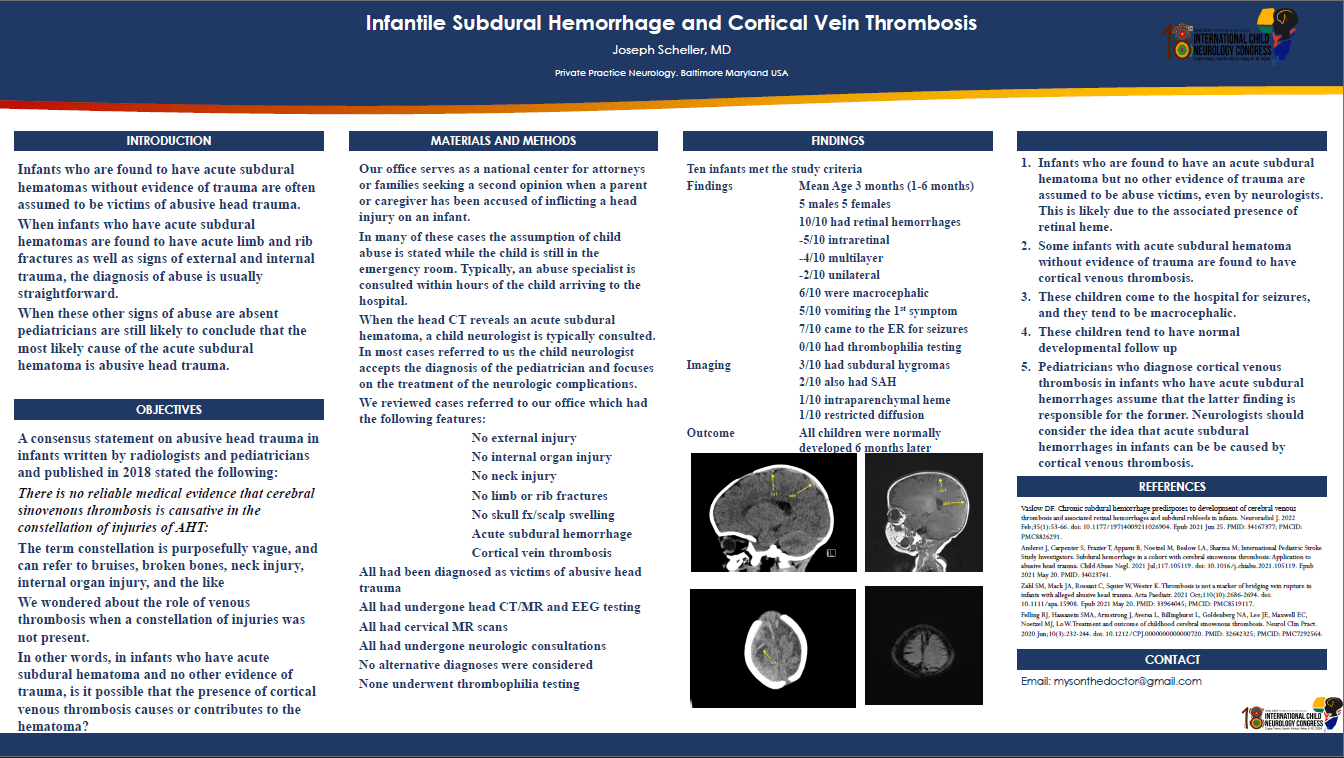Infantile Subdural Hemorrhage And Cortical Vein Thrombosis
Introduction Infantile acute subdural hematomas often trigger an investigation of abusive head trauma. We wondered if cortical vein thrombosis without evidence of trauma could be responsible for acute subdural hematoma. Methods Our practice is a center for second opinions for infants suspected of having suffered abusive trauma. All infants have undergone physical exams, head CT and MR, neck MR, skeletal surveys, and ophthalmologic exams. Infants are followed for a minimum of one year. We selected infants who were suspected of suffering abusive head because of the presence of an acute subdural hematoma and cortical venous injury but had normal physical exams, skeletal Xray, and a normal neck MR. Results 10 infants met the inclusion criteria. Five were male and five female. Average age was 3 months. Five had vomiting and five had an alteration of consciousness. Six had macrocephaly. Seven suffered seizures. All had retinal hemorrhages. Imaging revealed acute subdural hematoma, chronic subdural fluid collections, and cortical vein thrombi. All of the children had a normal outcome. Conclusion Infants who are found to have acute subdural hematomas are often suspected of being abused. There appears to be a subgroup of these infants who, other than retinal hemorrhagers, have no other evidence of injury. Their subdural hematomas are apparently related to cortical vein thrombosis.
Joseph Scheller
United States
